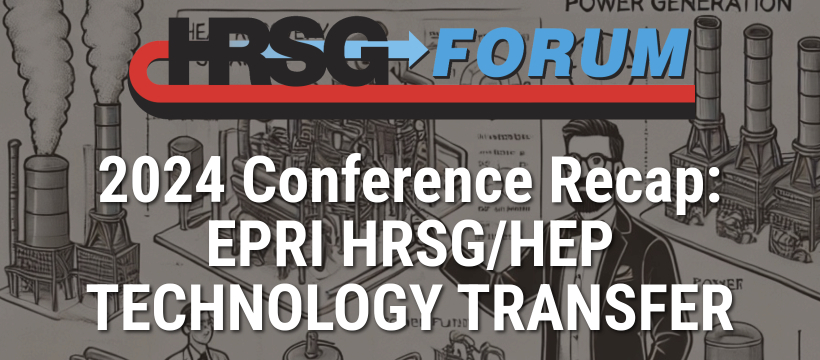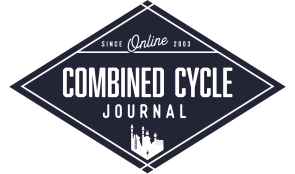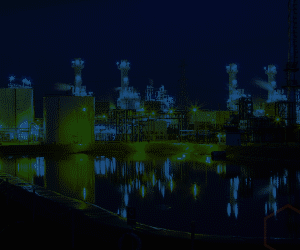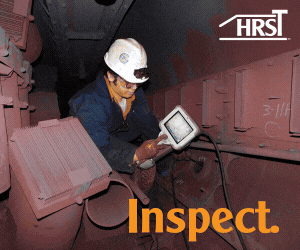
The HRSG Forum isn’t just another industry conference—it’s the only “user group” event where every session is open to all participants, fostering real-time exchange across users, OEMs, consultants, and solution providers. No sessions are restricted but are moderated by Bob Anderson (Competitive Power Resources) and Barry Dooley (Structural Integrity, UK) to ensure fruitful presentation and discussion outcomes. The 2024 HRSG Forum delivered critical technical insights on catalyst management, boiler feed pump reliability, flexible operation challenges, advanced metallurgy, and pressure part failures. With demand rising, resources tightening, and equipment aging, this report is packed with practical takeaways and cutting-edge updates to help you stay ahead. If you’re in the business of making HRSGs safer, cleaner, and more reliable, you won’t want to miss the 2025 HRSG Forum, July 21–25 in The Woodlands, TX. The following report is divided into four parts:
- Catalyst system O&M workshop
- Boiler feed pump O&M workshop
- HRSG Forum general session
- EPRI: HRSG/HEP technology transfer
As is the custom at HRSG Forum, the fourth day is dedicated to the latest HRSG/HEP research and case studies conducted by the Electric Power Research Institute (EPRI), and open to all conference attendees.
This full-day event was presented by:
- Bill Carson – Program Leader, HRSG.
- Eugene Eagle – Senior Technical Leader, HRSG.
- Tom Sambor – Program Leader, Power Plant Piping.
- John Siefert – Program Leader, Materials.
Eugene Eagle opened with the Heat Recovery Steam Generator (HRSG) Program Overview. The mission: Provide best practices and technology to enable high HRSG reliability with limited resources.
Eagle’s background on EPRI included:
- Examples of current research.
- HRSG-specific research areas and reports.
- Damage mitigation initiatives. 2024-2026 focus:
- Erroneous attemperator operation.
- Component damage mechanisms and avoidance strategies.
- Thermal transient evaluations.
- Improved performance programs and troubleshooting guides. 2024-2026 focus:
- Gas turbine upgrade impact on HRSGs.
- Improving turbine exhaust gas flow distribution to HRSG coils.
- Improving HRSG thermal performance.
- Life management.
- When, where and how to detect damage.
- Disposition of damage.
- Damage tolerance.
- Tools and methods to support an integrated approach to fitness for service.
- Flexible operation. 2024-2026 focus:
- Purge procedure improvements to reduce startup time.
- Best practice operation strategies to reduce impact on components.
- Reducing gas turbine impact on HRSGs during flexible operations.
- HRSG innovations. 2024-2026 focus:
- New methods of steam conditioning beyond traditional attemperation.
- Novel gas turbine exhaust attemperation concepts.
- New materials and features (e.g. dissimilar metal welds).
He followed with a list of project updates with detailed status reports.
State of the industry
Tom Sambor then presented a valuable reminder on the current State of the industry: summary of challenges.
In general terms, the perspective on energy transformation can be classified as:
- Increasing:
- Flexible operation.
- Material complexity.
- Supply chain challenges.
- Alternative repair solutions.
- Fitness for service (continuing to run).
- Decreasing:
- O&M budgets.
- Awareness of Codes and Standards.
- Service provider expertise.
- In-house engineering and support staff (owner/operators and OEMs).
The stark summary: “We are all being forced to do more with less,” he emphasized. Sambor supported this with recent news headlines on workforce reductions within the industry.
The underlying message was the relevance and value of EPRI and its ongoing research. Much information is available to the public. For more extensive access, those without an EPRI account can go to https://enroll.epri.com or askepri@epri.com.
Sambor then presented EPRI’s Integrated Life Management Strategy, a “rigorous approach focused on mechanics, metallurgy and nondestructive evaluation” leading to component life assessment.
Looking at a comprehensive list of industry issues, Sambor explained that the remaining time in this technology transfer day would offer various details including flat-end closures, intersections (tees), and developments with creep strength enhanced ferritic (CSEF) steels.
He noted that EPRI Report 3002005846 contains a comprehensive list of industry issues and includes suggested life management strategies.
Fitness for service (FFS)
John Siefert then presented EPRI’s comprehensive knowledge on Fitness for service of power generation components.
He reviewed the history of EPRI work related to fitness for service, and on the growing need for FFS methods. Many specific and detailed examples of projects and case studies followed covering examples with Grade 22 and 91 materials. Current “hot issues” dealt with cracking and repairs in 1CrMoV HP steam turbine casings and a Grade 91 replacement forged valve body, among others.
The summary: FFS is becoming more critical as the need for power keeps increasing. Detailed analysis is critical. Siefert emphasized that “EPRI research is helping utilities limp along, buying time (when needed).”
End caps
Siefert and Sambor then turned to “emerging problems,” specifically end caps.
They noted that “run, repair, replace decisions are vital to a plant that has dozens of at-risk end caps or fleets that have hundreds.”
An interesting set of slides focused on dispelling myths and rumors associated with end cap damage and failures.
Dispelling myths and rumors
Each of these myths was discussed. All are false:
- End cap damage/failures are a new industry issue.
- Examples were given back to 1991.
- All sections of the HRSG are equally susceptible to damage failures.
- Known service-related damage/failures have all occurred in high-temperature sections, e.g. HPSH and RHTR sections.
- Risk of end cap damage/failures can be mitigated with NDE alone.
- Examples: confirmation of improper root pass material is only possible through sampling; creep damage is not detectable with linear phased array.
- Damage/failures in end caps are all associated with fatigue.
- In a list of six well-documented cases, four were due to creep, one due to fatigue, and one unknown, complicated by a previous weld repair.
- Damage/failures in end caps are all associated with improper fabrication.
- Damage/failures in end caps are all associated with normal operation.
- Elevated temperatures and/or severe transients were reviewed.
- Damage/failures in end caps are all associated with one style of end cap.
- Plug, relief radius, plate and offset caps were reviewed.
Subsequent slides addressed each of these.
The truths in summary:
- End cap damage and failures are not new.
- Different styles of end caps are vulnerable.
- End caps are susceptible to creep and/or fatigue damage.
- Fabrication flaws are generally not the cause of damage/failures.
- This is a safety concern; end caps can and have become projectiles.
The suggestion from EPRI Report 3002011049 is to implement a risk-informed assessment program for flat end caps.
Tee intersection damage
Sambor continued with an update on high-temperature tee intersection damage research. An EPRI Industry Alert was issued in February 2023: Seamless tee intersections, available by clicking here.
The basic alert: Applies to any modern plant constructed with a Grade 22, 91 or 92 piping system, typically including:
- All CCGT plants built after 1998.
- All supercritical coal-fired plants built after 1998.
More specifically, this applies to:
- Grade 22, 91 and 92 steels (and X20).
- Main steam and hot reheat systems.
- Operations above 1000F (540C).
- Failures in as few as 35,000 hours with many in the range of 50,000 to 70,000.
- Cracks and leaks in crotches and girth welds.
A single powerplant unit generally may have four to eight at-risk tees.
Risk mitigation, in general, was addressed by Sambor as: “Reduce uncertainty through implementation of a comprehensive life management approach and targeted replacement for optimized tee intersections.”
Case studies followed focusing on:
- HP to process steam tee.
- Main steam to turbine stop valve tee.
- Main steam combining tee.
An overview: the damage mechanism is consistent and comes down to creep damage mechanism, not fatigue.
Sambor explained in detail the EPRI screening technologies used, as well as repair and replace options.
The bottom line: This is another safety issue and is not going away.
Alternative Grade 91 weld repairs
John Siefert then addressed EPRI’s comprehensive knowledge on Alternative weld repair research and applications, primarily focusing on installed Grade 91 components. In the US, nearly 1200 combined cycle plants have Grade 91 steel, primarily in the highest temperature locations including HP/Main Steam and RH/Hot Reheat systems.
He drew some conclusions from experience in the UK:
- ~5 percent of the total girth weld population was susceptible to Type IIIa or Type IV in-service cracking before achieving intended design life.
- On a plant basis, the susceptible girth weld cracking population was 10 percent.
- On a system basis, the population was as high as 30 percent of the main steam girth welds.
He then covered alternative weld repairs in Grade 91 in combined-cycle and fossil plants.
Siefert presented five end-user case studies, and listed a total of 14 end-users from the in-depth EPRI database, stating that there are more than 10,000 alternative weld repairs in operation (and ~6 known repair failures), with most in high temperature and cycling operation. “Sustained EPRI support from industry is not a trivial exercise,” he stated. “It is essential!”
Back-end fouling
Eugene Eagle then returned to discuss Proactive and reactive approaches to back-end fouling, beginning with the reactive.
Recent EPRI research includes pressure wave, detonation cord and foam-based cleaning methods for HRSG gas-side tube cleaning. Guidance is available in EPRI report 3002007881 and others.
Eagle then continued with the proactive: Mitigating back-end corrosion and deposition.
Typical strategies include staying above the dew point, good layup practices, correct use of exhaust gas dampers, and regular catalyst cleaning. Eagle also addressed potential future research activities, including tube coatings, gas conditioning (sulfur removal), and economizer redesign/materials changes.
Hard-facing failures
John Siefert then concluded the sessions with EPRI’s comprehensive knowledge on Co-base hard-facing failures (in valves). He called it “an endless odyssey with failures galore.”
“The consequence of liberated hard-facing transported to the steam turbine is in the millions (of dollars) and will reduce sealing contact in safety-critical valve applications,” he said. “Despite attempts to raise awareness, failures are still occurring throughout the industry.”
For more on delamination of hardfacing and how to avoid it, click here.
He then reviewed recent field tests and microstructural validations.
His summary:
- The development of integrated solutions validated by service experience typically takes ten years of sustained research.
- A Ni-base butter layer should be implemented as best practice for any hard-facing applied to an Fe-base substrate regardless of application, location or operating temperature.
- A Ni-base butter layer must be implemented for Fe-base components operating above 900F and/or if upstream of steam turbine.
Hard-facing delamination remains a major issue in the industry today, and studies are ongoing.





